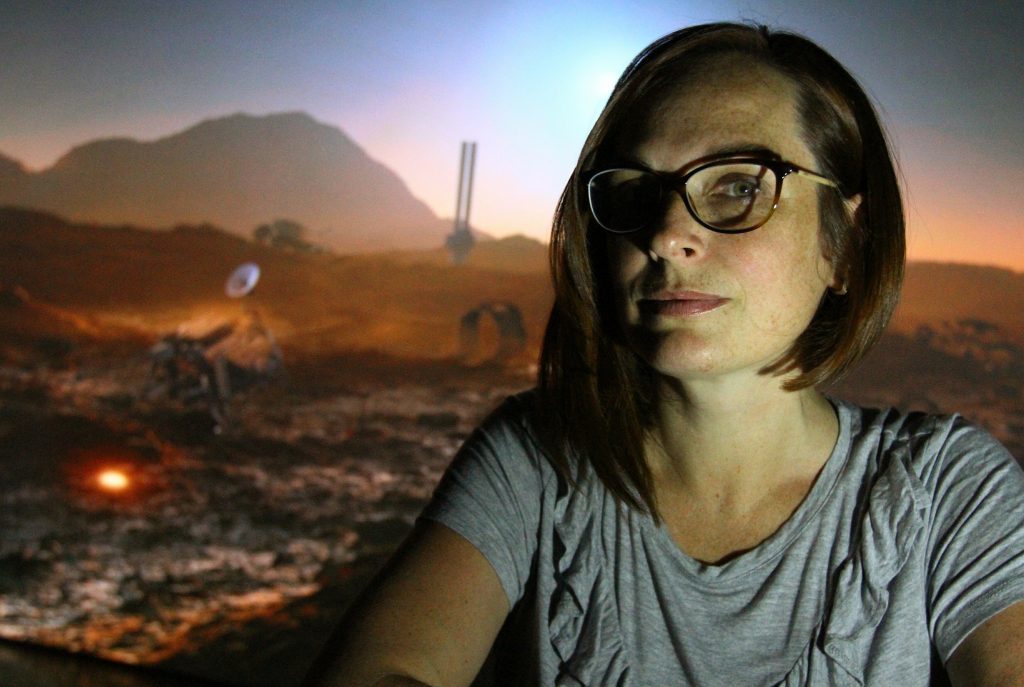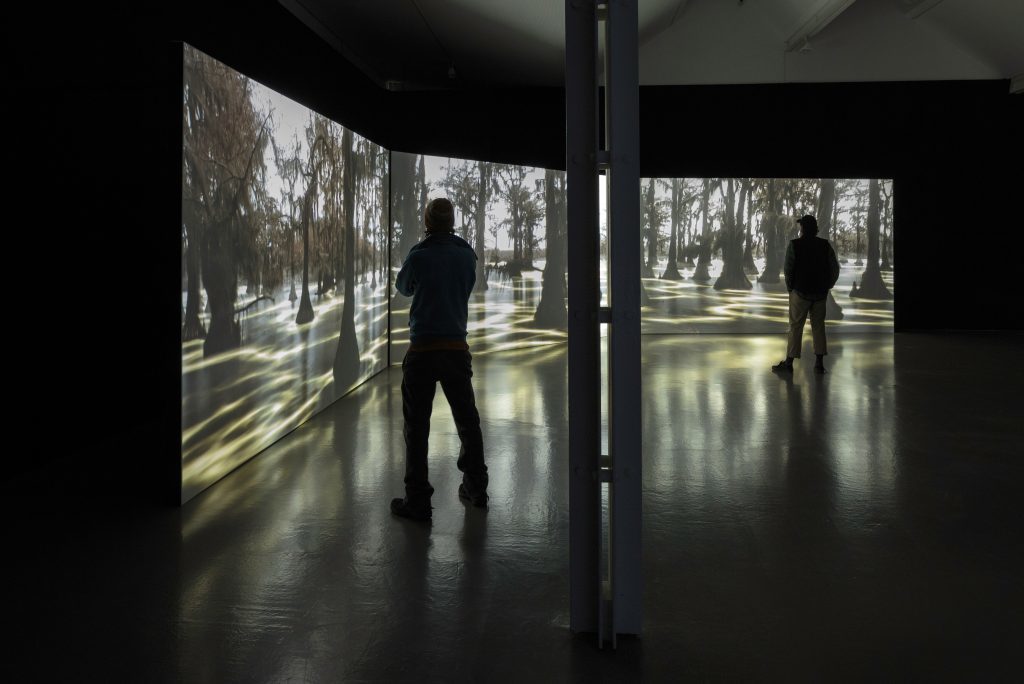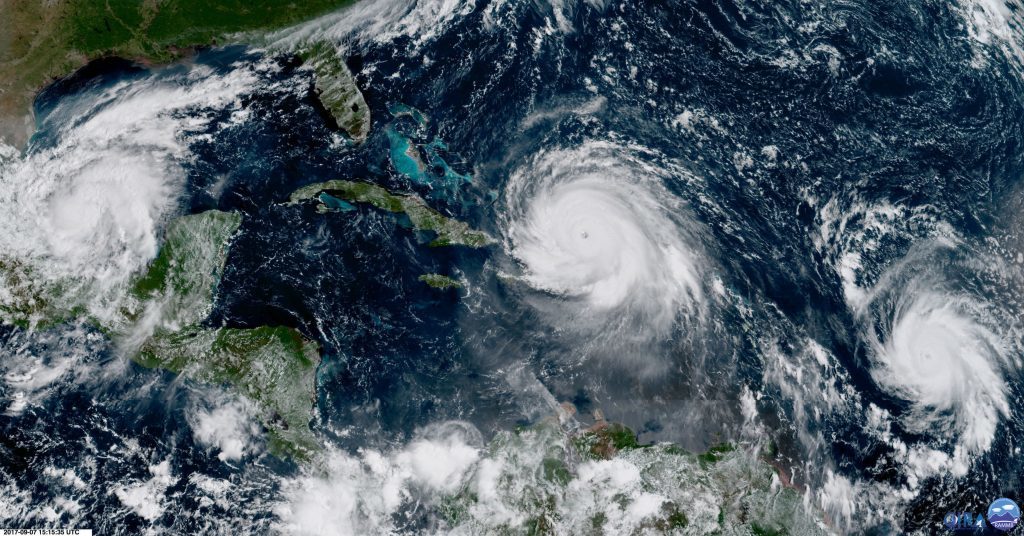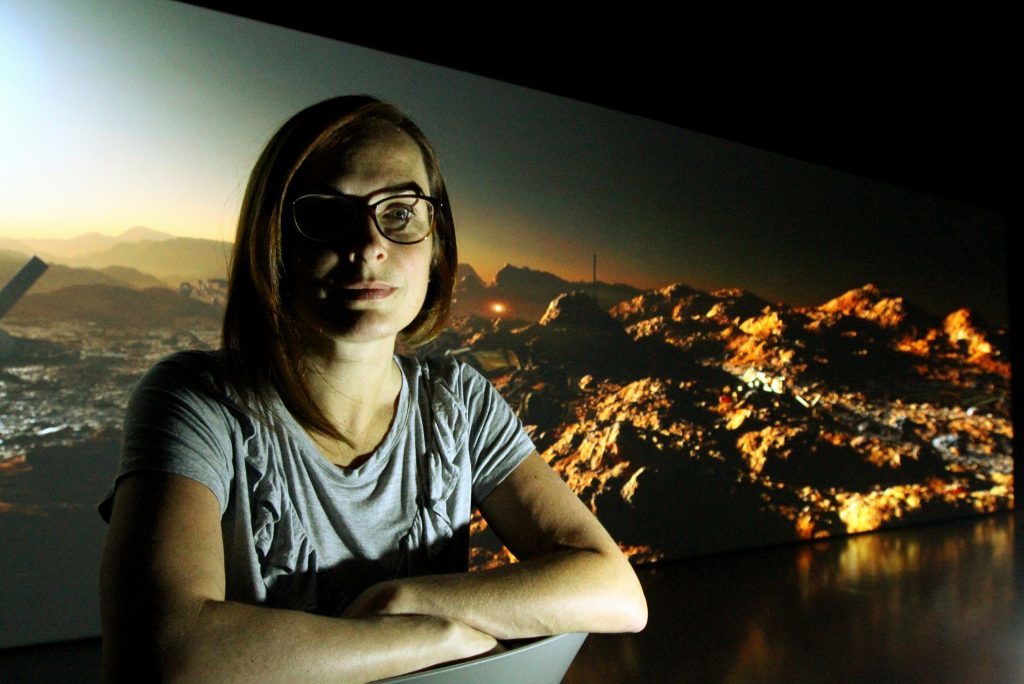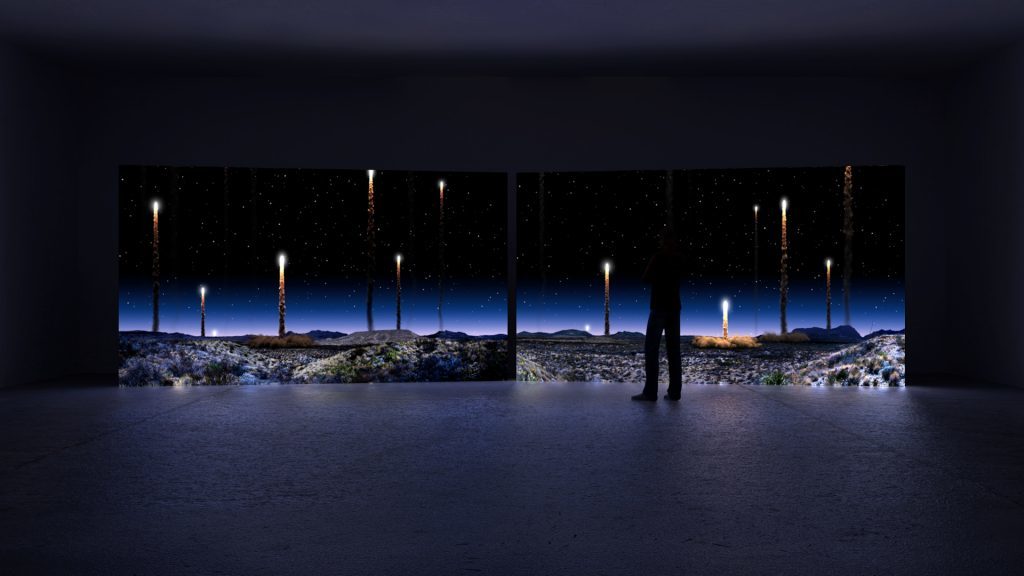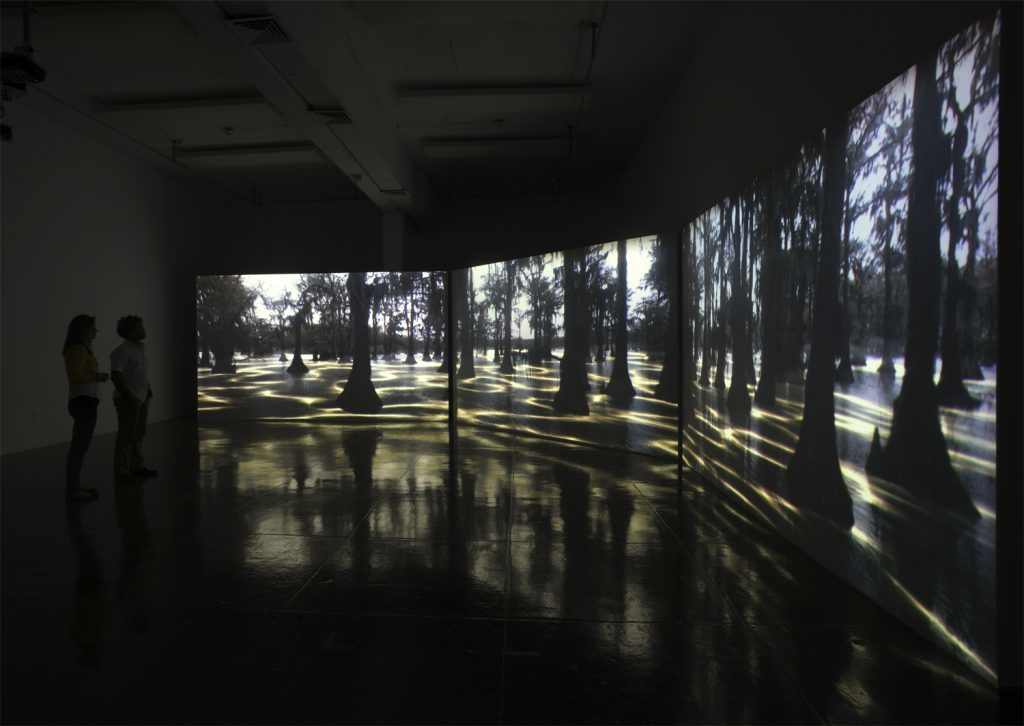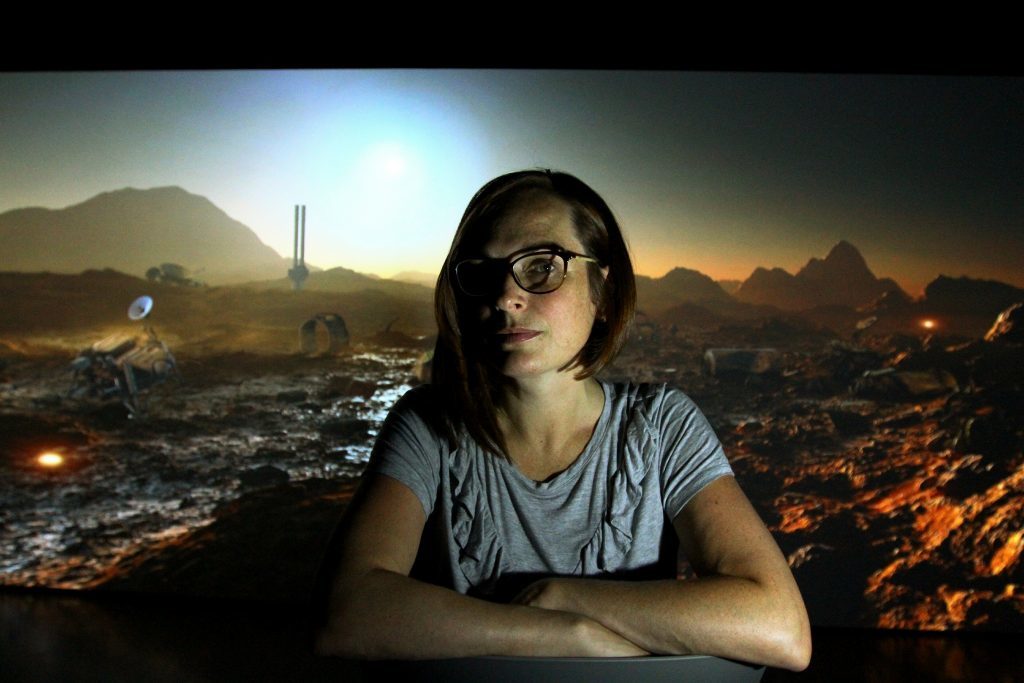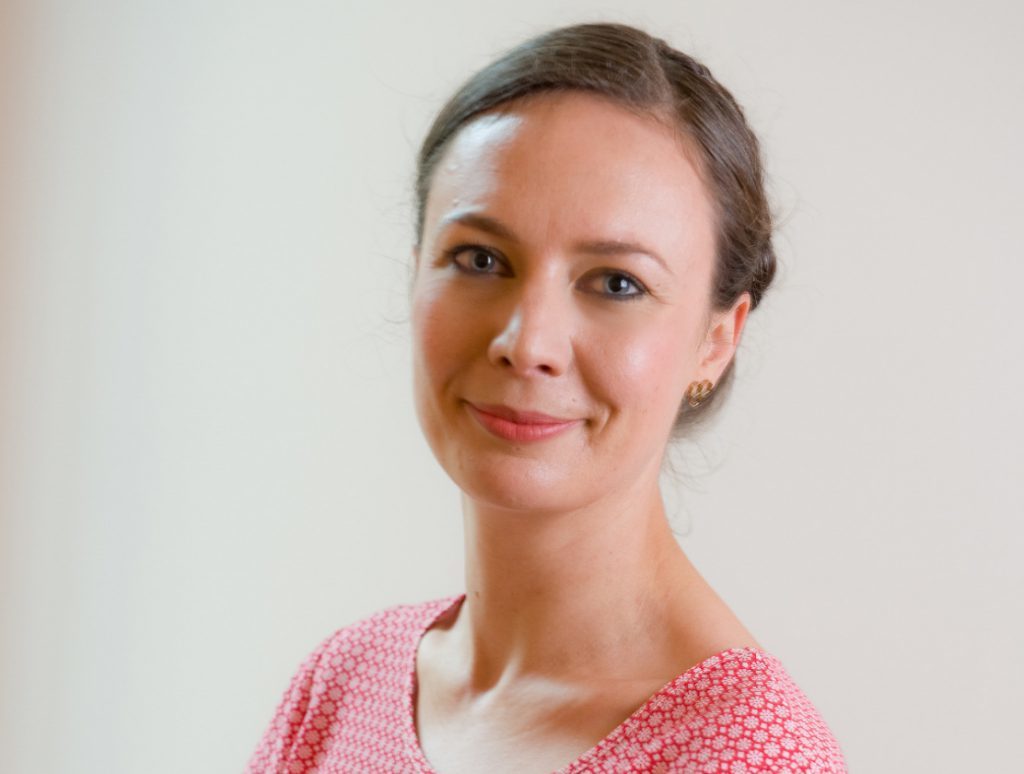It was the book that told the dramatic story of the Earth’s climate, of how it has changed, how we have come to understand it and of what that means for the future.
But now Tim Flannery’s gripping 2005 narrative The Weather Makers has helped influence a new chapter of debate about the future of humanity by inspiring the name of the first solo exhibition in Scotland by Canadian artist Kelly Richardson.
Richardson creates hyper-real digital films of rich and complex landscapes that have been manipulated using CGI, animation and sound.
Weaving together myth and metaphor with scientific research and new digital technologies,The Weather Makers, which has opened at DCA, and is programmed in partnership with Discovery Film Festival, presents three large-scale video works alongside a new print series.
The exhibition asks the viewer to consider what the future might look like if humans continue on our current trajectory of planetary pillaging and consumption, and why our species have allowed ourselves to arrive at such a moment of global environmental crisis.
Kelly has “no idea” whether art can change the world.
But she certainly believes her work can help the viewer “feel” what those lives in future might be like.
“For me the exhibition is a bit of a call to arms,” she says.
“We need to act very very quickly to avert catastrophic changes with regards to global warming.
“For some scientists the jury is still out as to whether we even have enough time.
“We are already beginning to see quite a lot of changes – especially the last couple of weeks with the category five hurricanes.
“As things heat up we won’t necessarily get more hurricanes but the intensity of those hurricanes will be ramped up. This is what we are seeing now.
“Then there’s the oldest snow patch in Scotland which has existed for 300 years but which is melting.
“There’s Trump, North Korea, the snow patch, the hurricanes. Every time I have an exhibit there are real life storylines I can tie the work to.
“I actually feel quite cursed!” she laughs.
“Every time I launch an exhibition something horrible happens. What I realised is that it’s just constant. It’s all the time now and a backdrop to everything.”
Canadian-born Kelly, 45, now lives on Vancouver Island, where she is Associate Professor in Visual Arts at the University of Victoria.
All of the work being exhibited in Dundee was inspired during her recent 14 years living in the UK –and she is delighted to be exhibiting in a city which she regards as “fantastic”.
She adds: “I love Dundee. It’s a great little place. I’ve visited a lot of places in the UK and when I came here I thought ‘you know what? I could live here!’”
In Leviathan (2011), a 20-minute loop of footage shot on Caddo Lake in Uncertain, Texas displays the region’s unique bald cypress trees in their swamp environment.
Filmed from a single vantage point, like a painting set in motion, Richardson has digitally enhanced the nearly monochromatic setting with strange yellow tendrils of light, undulating and twisting beneath the water, hinting at an undiscovered or mutated bioluminant life-form, or perhaps the aftermath of something altogether more disturbing.
In Mariner 9 (2012), a 12-metre-long panoramic view of a Martian landscape set hundreds of years in the future, evokes the human search for life beyond our own planet that continues even as we damage or destroy entire ecosystems on Earth.
This vast video work was created using scenery-generation software employed by the film and gaming industries in combination with technical data from NASA’s missions to Mars to produce a faithful artist’s rendering of Martian terrain, populated by the debris from centuries of exploration.
In Orion Tide (2013-14), Richardson presents a desert punctuated by spurts of light and smoke repeatedly launching into the dark night sky.
The viewer is left to question what these rocket-like movements are; why they have been launched; and who or what they are carrying.
They could be departing explorers searching for a new world or perhaps the escape of a group of planetary refugees, a mass exodus of humanity.
Accompanying the exhibition’s large-scale video works will be Richardson’s latest series of chromogenic prints, Pillars of Dawn, which present images of an imaginary desert in which trees and terrain have been physically crystallised by changes in the environment.
She adds: “It’s hugely important for me for people to be able to visit these future landscapes and proposing in order to feel what those lives might be like where the viewer is the main character. “There are no other humans in my work and that’s very deliberate. So we can feel it.
“We can read scientific reports, we can read reports about climate change, but it doesn’t offer the same thing as standing in front of it and feeling what life might be like, and in doing so perhaps provide that really important window to see our current trajectory and our current priorities with some measure of hindsight.
Beth Bate, Director of DCA, said: “We’re delighted to be working with Kelly Richardson at DCA for her first solo show in Scotland.
“Programming the exhibition in partnership with our annual Discovery Film Festival means that hundreds of children and young people will have the opportunity to engage with the thought-provoking and highly topical work of this international artist.”
NEoN Digital Arts Festival, which runs from November 7 until November 12, have also invited Kelly to guest curate an exhibition in Centrespace in the Visual Research Centre at DCA which includes digital video works by UK artist Paul Dolan and Canadian artist Paul Walde. This exhibition will run alongside The Weather Makers from Thu November 9 to Saturday November 25.
*The Weather Makers by Kelly Richardson, until November 26 , Dundee Contemporary Arts, Dundee
